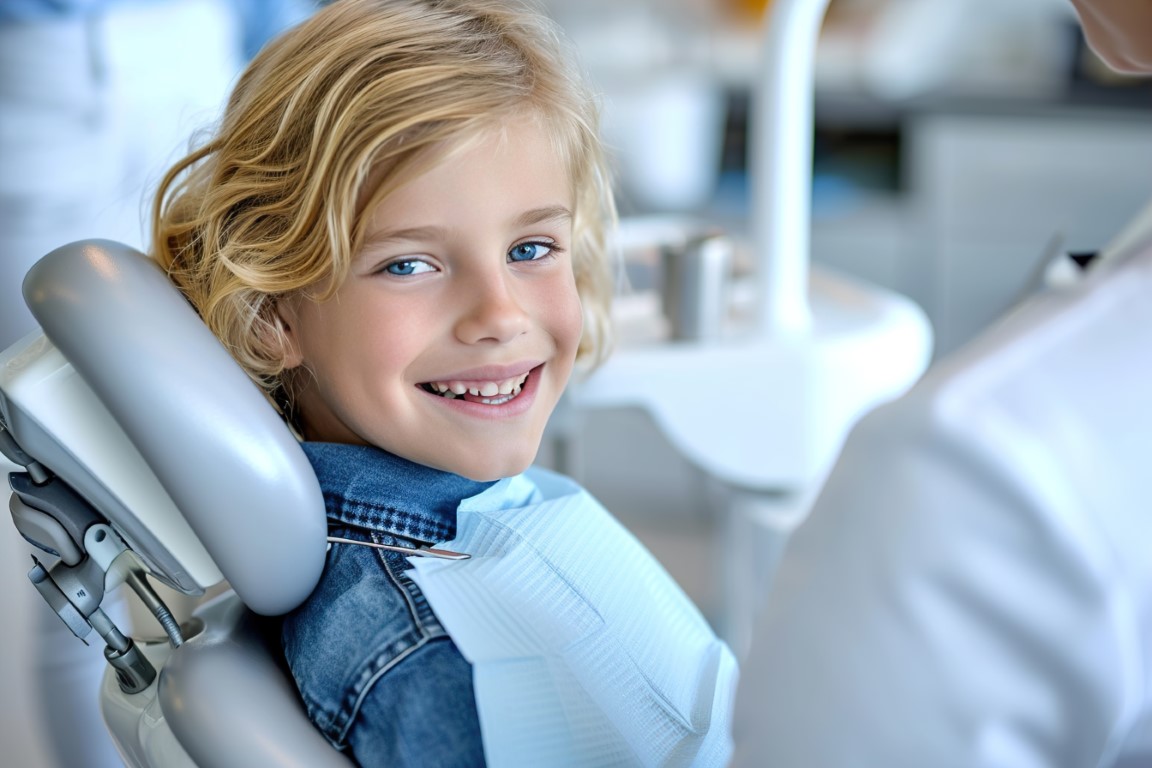I have a lot to keep up with as a busy father of four children between school, clubs and sports, doctors’ appointments, eye exams… you get the picture. A question I frequently get from parents that I run into at events is, “When should I take my child to be evaluated by an Orthodontist?” This article addresses that question making this this one less thing for you to worry about.
The American Academy of Orthodontics (AAO) recommends an evaluation by an Orthodontist at age 7. At this age most children have lost several ‘baby’ teeth and adult or ‘permanent’ teeth are in the process of eruption. This gives us the opportunity to evaluate and make sure that all of the teeth are moving into the proper locations and alignment. Age 7 also enables us to intervene if an early problem is detected, preventing future problems before they get started. Children’s upper and lower jaws are also continuously growing during this stage of development and can be guided by proper (or improper) alignment of the teeth.
Often, parents notice something “doesn’t look right” and realize that there is a need for an exam or early intervention. Other conditions may not be as obvious; here are some of the big things the the AAO advises parents to look out for and why:
Underbites – when the lower front teeth are ahead of the upper front teeth. This can lead to a situation where the Upper jaw growth is stunted due to being ‘trapped,’ by the lower jaw.
Crossbites – when the upper teeth are inside of the lowers. This makes chewing difficult and can lead to broken teeth or excessive and early wear of teeth.
Functional shift – when the jaw shifts to one side as the teeth come together. If a child has to shift their teeth to the left or right for their teeth to fit comfortably together while chewing this can cause the lower jaw to grow unevenly. This can also contribute to crowding and wear.
Very crowded teeth – Crowded teeth can make it difficult for permanent teeth to erupt into the correct position. If left untreated, crowding increases the risk of teeth decay and gum disease.
Excessively spaced teeth – This is often an esthetic concern for individuals or parents but if not addressed can lead to food getting stuck between teeth and contribute to cavities.
Extra or missing teeth – An early visit can help us to plan around missing or extra adult teeth. In many cases it is possible with braces to close gaps where a tooth is missing, preventing the need for a dental implant or bridge. Orthodontists can also create space for teeth that may be impacted or trapped.
Thumb-, finger- or pacifier- sucking that is affecting the teeth or jaw growth – A thumb or pacifier between the teeth doesn’t allow the teeth to develop and erupt properly to meet each other. This can contribute to an open bite, constricted upper jaw as well as the upper teeth sticking too far out.
Mouth breathing – Believe it or not, breathing exclusively through our mouth is not healthy for proper upper and lower jaw development. Holding the mouth open to breathe causes the jaw muscles to put inward pressure on the upper and lower teeth, constricting the dental arches. This contributes to posterior crossbones as well as open bite.
Teeth that meet abnormally or don’t meet at all – This may be caused by a skeletal problem or one of the conditions above. If caught early, Orthodontic therapy can prevent the need for more serious interventions at a later age.
By catching some of these conditions early we can have huge impact on the healthy growth and development of your Childs teeth, jaws and facial esthetics. This allows your child to eat, chew, breathe and especially smile properly. Most of these problems will not fix themselves and are best managed by an Orthodontist.
In addition, if something “seems off,” or you have questions about your child’s teeth, we are happy to see them prior to age 7. Contact us for a free evaluation.
